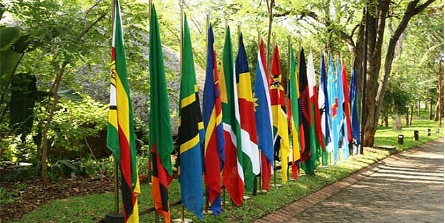Liesl Venter speaks to tourism board representatives on what the year holds.
There is much optimism among tourism authorities in Southern Africa for growth this year.
In September 2017, Euromonitor International, provider of strategic research, revealed at the 41st Annual World Tourism Conference in Kigali, Rwanda, that international arrivals to Africa grew by 6.5% in 2017, reaching 18 550 million. And the numbers are still climbing.
“Based on statistics, the region as a whole is growing,” says David Germain, Regional Director – Africa and the Americas at the Seychelles Tourism Board, who believes the diversifying of markets, allowing for more emphasis on secondary markets, is one of the main reasons for this growth.
“Europe is doing very well at the moment, but to avoid a situation of ‘putting all our eggs in one basket’, we are tapping into smaller markets with potential for growth,” he says.
Across Southern Africa, tourism authorities will pull out the stops in 2018 to showcase the diversity and experiences available in the region to inbound visitors. But there are numerous challenges.
In South Africa, where the 5-in-5 strategy will continue to take top priority, every cent will count in a tight economic climate. Says Sisa Ntshona, CEO of South African Tourism. “We need to co-ordinate all our efforts – firstly, across government departments to avoid duplication in marketing and investment.
“This also goes for the trade, where we will work closer to share all marketing collateral, assist in profiling their offerings on our digital platforms, and continue with supporting new players to enter the industry and grow our brand.”
South Africa will also continue to address perceptions around safety and security, economic constraints on travellers and the ease of entry.
Albino Celestino Mahumana, Director General of the Mozambique Tourism Authority, agrees that the greatest test facing tourism in 2018 is the economic crisis. “This challenge has influenced the ‘high’ cost of tourism products – mainly transport and accommodation,” he says. In comparison to the rest of the region, these costs are very high in Mozambique, making it difficult for the country to compete, despite having unique products.
Business development, he says, is another challenge affected by the economic crisis. “This is linked to the lack of investment due to the high cost of material versus the exchange rate from the metical to the dollar and euro.”

Working with trade
“Collaboration between ourselves and trade is central to what we do,” says Ntshona. “Forging closer working relations is imperative for tourism growth.”
He says much effort will be made in 2018 to provide current insights and analytics to trade, providing market access to SMEs, and including trade in all the marketing considerations and efforts.
“The webinars [conducted with Tourism Update] that we have been running during the course of 2017 have also assisted us to listen and understand the trade better, making sure we address concerns and work in tandem, to realise our joint mandate of making South Africa one of the most preferred tourism destinations in the world.”
According to Germain, exposure of the island on digital and traditional platforms worked well in promoting the Seychelles during 2017. “Social media has also become important and various bloggers and social influencers visited the island in 2017. We’ll continually be looking for opportunities in these areas.”
Regionally, the Regional Tourism Organisation of Southern Africa has a repositioning strategy with the aim of increasing the SADC’s share of tourism from its current 2% of global tourist arrivals and receipts to 5% within the next decade.
In a departure from past practice, which saw a preoccupation with governments and public sector, the new vision is founded on strong partnerships with the private sector and supportive policies.
Speaking at provincial level, familiarisation trips, media hosting, joint marketing agreements, site inspections, joint bidding and delegate boosting for trade shows are all of crucial importance at present, says Judy Lain, Chief Marketing Officer of Wesgro, which promotes tourism in the Western Cape.
“We will also be focusing on one-on-one engagements to better understand how the industry sees the role of the tourism authority in the future in terms of creating an enabling environment for them to succeed.”
In the Northern Cape tourism authorities are working hard to showcase the province’s diversity. From the red dunes of the Kalahari to the stark landscapes of the Karoo, it is spotlighting the various niches that each region offers.

Exhibition appearances
According to Ntshona, this year South Africa will exhibit at strategic platforms that proved successful in 2017.
In addition to hosting its important strategic platforms in South Africa – Meetings Africa and Africa’s Travel Indaba – SA Tourism will participate at ITB in Berlin and WTM in London for the leisure market. For business events it will exhibit at IMEX Frankfurt, IMEX Las Vegas, and EIBTM China and Spain.
Seychelles will once again hold its annual roadshows this year. “We will also be exhibiting at the 2018 Travel Expo [SA] World Travel Market Africa, Getaway Show [SA], Meetings Africa, Indaba and several bridal shows in Johannesburg, Durban and Cape Town,” says Germain.
Wesgro, says Lain, plans to exhibit at Meetings Africa, WTM Africa and Indaba. “Our Convention Bureau will focus on IMEX (America and Frankfurt), IBTM (Barcelona and Africa) and SAT’s China and India Roadshows. From a leisure perspective, the focus will shift away from large-scale international exhibitions to roadshows and in-country hosting of trade.”
Mahumana says, together with the private sector, establishing Mozambique as a destination of choice in the international arena will be a key strategy during the course of 2018. “This includes countries such as Germany, Portugal, and Spain.” These countries are strategic source markets for Mozambique.
























